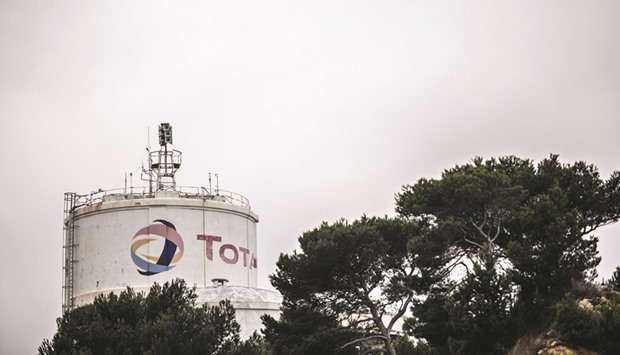Cargoes of crude oil are struggling to find buyers in Europe as demand from refineries falters due to unplanned halts.
Recent strikes at French refineries and the continued abundance of inventories mean demand for cargoes of newly pumped crude is weakening, according to DNB Markets and JBC Energy. That’s apparent in the price structure of derivatives linked to North Sea oil, where contracts for immediate delivery have been getting cheaper relative to later cargoes, broker data compiled by Bloomberg show.
“From a physical perspective, the market is very bearish,” Eugene Lindell, an analyst at Vienna-based consultant JBC said by phone. “From a seasonal perspective, you’d have peak European crude intake in July and August” and refiners should be preparing for that, but “that’s not what we’re seeing.”
Oil futures in New York have advanced about 90% from a 12-year low in February as disruptions from Nigeria to Canada and falling output in the US ease a global surplus. While the biggest names in global oil markets, from Saudi Arabia’s Energy Minister to the International Energy Agency, share the view the global oil supply is now back in balance with demand, some data on physical oil flows point to a continued oversupply.
In the North Sea, the price structure of derivatives called contracts for difference - used in the North Sea for speculation or hedging - has inverted. On June 1, they were in backwardation, an indication of strong market where cargoes for the earliest weeks fetch higher prices. Now they are in contango, a sign of a weak market where earlier cargoes are cheapest.
The CFD for one week ahead traded at a discount of $2.10 a barrel on Wednesday, according to data from PVM Oil Associates Ltd compiled by Bloomberg. That compares to a gap of $1.23 on June 1 and is close to the widest discount since November, the data show. The discount narrowed to $1.96 Thursday.
A handful of cargoes have taken longer than normal to sell in the North Sea. Total, one of the companies affected by the French industrial action, took delivery of a cargo of Forties crude onto a supertanker called Maran Thetis in April and was still trying to sell it earlier this week, according to traders and brokers monitoring price reporting agency Platts’s trading window. Samail, a tanker capable of shipping 2mn barrels of crude, discharged in Rotterdam on Thursday, three months after loading at Scotland’s Hound Point terminal.
Options markets are also showing indications of weak demand for crude, Harry Tchilinguirian, head of commodities strategy at BNP Paribas, said by phone.
Prices for the contracts are trading in a pattern that indicates traders are hedging more against declines than increases. That bearish bias, or skew, is the widest it’s been in at least four and a half years, according to exchange data compiled by Bloomberg.
This reinforces “what we’re observing in the physical market,” Tchilinguirian said. “Despite outages of production in Nigeria, we’re not seeing in the curve structure on the physical side any indication of supply shortages, rather to the contrary.”
The French industrial action is the “biggest bearish factor in the market right now,” Lindell said. Yet it “should be dissipating rather sooner than later.”
French workers protesting a new labour law have halted or blockaded refineries, fuel depots and import terminals throughout Europe’s second-largest oil consumer. At one stage earlier this month, almost all of the nation’s crude-processing plants were either curtailed or shut down, affecting around 1.4mn bpd of refining capacity. At least half were working as of Wednesday, with several others in the process of restarting.
The current weakness in the market is all the more worrying because output of Nigerian crude has already been curtailed by militant attacks on oil facilities, Lindell said. Buyers aren’t replacing those supplies with purchases of other grades that would have caused prices to rise, he said.

A storage silo stands at La Mede oil refinery, operated by Total, in La Mede, France. Recent strikes at French refineries and the continued abundance of inventories mean demand for cargoes of newly pumped crude is weakening, according to DNB Markets and JBC Energy.


